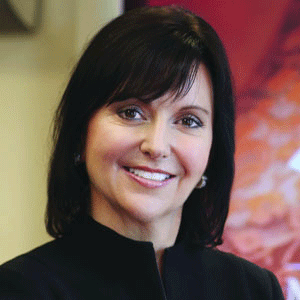THANK YOU FOR SUBSCRIBING
Editor's Pick (1 - 4 of 8)

Technology check-in: Does your hotel pass these three mobility challenges?
Dirk Dumortier, Director, Healthcare & Hospitality Sales APAC, ALE


Dirk Dumortier, Director, Healthcare & Hospitality Sales APAC, ALE
Your WiFi should follow that guest!
It is not simply a case of adding a few more access points around the hotel – you need a solution in place to ensure simple and secure guest access and authentication. This simplified connectivity needs to ‘follow’ the guest around the premises, providing access to services where and when they need them. For instance, APs that can continuously monitor connection metrics from mobile devices can use this data to steer device connection to the most appropriate AP, which prevents the WiFi network from slowing down as people move throughout the hotel premises.
Challenge 2: Follow that device – mobile guest services from digital reception to check-out
A guest that uses the spa, the restaurant and the gym leads to a better bottom line. The key to unlocking this is the guest’s personal device – from providing direct bookings and services before guests arrive, to saving time by checking-out straight from their smartphone. This type of personalized experience ultimately means better guest engagement.
This requires frictionless digital interaction between guest and hotel departments – be that the front desk, restaurant or other facilities. With today’s open APIs (application programming interfaces), it is becoming easier than ever to integrate voice and message capabilities directly into guest loyalty or eConcierge apps.
Beyond this, location-based services are quickly establishing themselves as a way to offer guest services – providing directions to one of the resort’s featured restaurants or letting guests know what offers are available when they are walking past the spa are just a couple of examples. Successful digital engagement in the future will be personalized in these ways, and the data gained from mobile engagement will be invaluable to hoteliers in delivering personalized services and push notifications based on individual preferences.
Hotels are also using technology to ensure they are also getting the most out of each guest. Where phone systems in room are traditionally seen as cost-centers for a hotel, Accor Hotels is using a cloud-based system with a licensing model that allows them to only pay per occupied room per night, sharing the risk and reward with vendor and partners.
And mobility is not just for guests…
Behind the scenes, in hotels such as The Buddha Bar Hotel in Paris, enhanced mobility services are enabling staff to stay connected anywhere on-site, resulting in more attention made to guests’ demands. Add to this apps which enable employees to instantly report room availability via a code on their mobile device, or log and respond to maintenance issues on the move, and you can start to see how these capabilities can all add up to getting guests checked in faster and keeping them happy during their stay.
Challenge 3: Securing networks and containing threats with Containers and PANs
Hotels are a growing target for hackers and data thieves. The open, guest-facing nature of the hospitality industry means that hotels and venues need to be welcoming to guests and their devices. But with so many mobile, wearable and IoT devices entering the hotel space, balancing guest access while keeping data, hotel functions and back-end services secure is vital.
One of the core principles behind building a secure network for hotels is containerization technology. This is a method of creating virtual isolated environments on a single converged network. The idea is to group connected devices with a common function and the respective authorized users into a unique, virtual IoT ‘container’. For example, the ‘guest access container’ acts as its own network where guest users cannot see or interact with devices within the finance department’s container, or the IP cameras and alarm systems operated by the security team. Within each container, quality of service and security rules can be enforced and it is possible to reserve or limit bandwidth, prioritize traffic and block undesired applications.
As connectivity grows and with so many devices in guest rooms, you also need to consider what each guest can interact with – smart TVs, intelligent room assistants or climate control. With guests able to connect and mirror movies to the IPTV, how do you stop them connecting and streaming to the TV next door? The answer is the Personal Area Network (PAN). A PAN is almost like having a dedicated WiFi network for every room, where guests can interact with room technology as they’d expect at home – but crucially only in their room. Yes, hotels need to get connected, but they need to be smart about network security and the technology is now available to enable them to do just this.
Stay another day
To drive these benefits to their bottom line, hotels don’t just need to offer better mobility, they need to offer smarter mobility. The integration of a guest’s device through bespoke applications and services is only the beginning of the process – hoteliers need to add a personal touch to their technology offerings. That means enhancing guest experience with services that transform the Internet of Things into the Hospitality of Things and mobile engagement that offers timely and appropriate services to guests. But with digital criminals on the prowl and tech savvy guests highly aware of digital risks, securing hotel networks can no longer be an afterthought – secure connectivity needs to be at the center of design.
In fact, WiFi is so central to the guest experience that only room cost ranks higher in importance to guests












